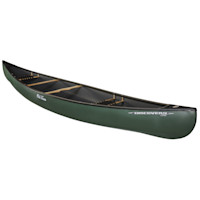
The first flush of daylight brought forth a cacophony. Rooster pheasants began cackling. A beaver slapped its tail. Sandhill cranes trilled overhead. Mallards squawked back and forth. Cinnamon and green-wing teal joined the chorus, along with widgeon whistling by. Honkers honked. Blackbirds, both red-wing and yellow, screeched their dissonant car horn calls.
Only one sound was missing.
Dan and I crept away from the river through the rising dawn and began to send out some searching, pleading yelps. Finally, through the willows and Russian olives we heard it: the rustling, boisterous chortle of a tom turk. The next time, it was louder.
Turkeys love river corridors. Valley-bottom cottonwood stands are many people’s favorite places to hunt their favorite bird, but I’ve met sparingly few other folks who use boats to get at gobblers. In home regions like mine where lots of other folks love public lands and private access is carefully guarded, sneaking into turkey territory via canoe or kayak takes a little bit more planning and effort but can be well worth it. This method also provides the day-saving ability to pick up a trout or smallmouth for the pan on the way home.
We’ve already told you about cast and blast, cast and grasp, so, without further ado, here’s the ol’ cluck and chuck.
Access the Inaccessible My personal hunting strategy always revolves around trying to go where other people won’t. Any time there is a barrier to entry to an area, fewer people will go there and more animals are likely to be around—and they’re less likely to be educated. Whether that’s crossing a creek, driving an awful road, hiking over a mountain, or paddling miles of whitewater. Anytime it isn’t easy to access you’re often going to have it to your own.
For this particular hunt, Dan and I launched my Old Town Discovery 16-foot canoe in a little stream near our houses and floated in to several blocks of public land that would have otherwise been completely inaccessible without tricky and expensive private access. We camped overnight and awoke right in the middle of the action, which we had to ourselves all day.
Cover Country In many parts of the Western U.S., turkeys are still expanding into the habitat available to them. That can make them spread out and relatively difficult to locate. Floating a river allows you to audit acres quickly, efficiently, and with far less exertion than walking. The grumbling of a truck engine is repellant to any hunted game animal, so this tactic is also far sneakier than traditional scouting through the windshield. A canoe or kayak doesn’t make any noise if you don’t want it to, allowing the stealthy hunter to slip right up next to likely feeding or roosting locations against a high bank without detection.
Call While You Float On our recent human-powered adventure, we didn’t feel the need to crow call or otherwise try to shock gobble turkeys; all the other noisy birds in the area would do it for us. We heard gobblers respond to pheasants, geese, and cranes. But I did keep one of Steve’s Jake Brake diaphragm calls in my mouth the whole time in order to cluck and yelp into likely habitat as we cruised.
I’m aware of the fact that this could have gotten us in a pickle. I usually try not to call without a set-up location at least nearby in case a hot bird shows up in a hurry. In public places where we actually thought one might show, we’d first tuck the canoe in an eddy or side channel before making noise. The rest of the time, we just squawked away in hopes of learning something about the distribution of the local turkey population. Floating through quickly on the current provides the rare ability to vanish as quickly as turkeys seem to.
Surf ‘n’ Turk Dodging sweepers and boulders in a canoe offers a lot more adventure juice than the standard walk-100-yards-from-the-truck-and-sit-under-a-tree turkey hunt. It appeals to me for that reason alone, but I also insist that fishing while hunting or vice versa is greater than the sum of its parts. Especially if you get skunked on the gobblers like we did last time, finding a fat fish will rectify even the worst of days.
Fishing out of a canoe on a moving stream is rarely a simple affair. Shit can get sideways shockingly fast. It’s always best to keep one person on the paddle to control the vessel while the other casts. The stern paddler has much more control than the bow position. Make sure to stay diligent, even with a fish on the line, because surprisingly small obstacles can turn a canoe turtle very quickly in current.
On that note, never go kayaking or canoeing without a lifejacket that’s actually around your body. A throw-rope bag is a smart addition too, as are bow and stern lines for roping through tricky spots. Keep your weapon, electronics, and extra gear in dry bags, just in case. Waders are great for keeping your pants dry until you get your boots on and ready for action.
Last season I accessed an area by river on opening weekend and was searching for a good spot to shed my chest boots when an errant cluck from my diaphragm brought a horde of eight gobblers tripping over each other out of the brush in my direction. I hustled forward to a shooting lane right as the first red heads appeared through it. A standing shotgun blast laid low a 22-pound tom before I’d even gotten into my camo—testament to the merit of working just a little harder than everyone else.






